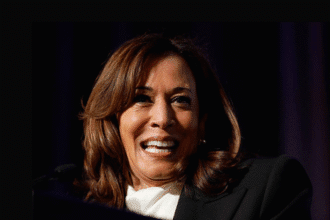With New York City, Zohran Mamdani winning the primary to become its new mayor, the political world was rattled, as they were beginning to have a desperate need to change. Being a progressive, a first-generation, and a 33-year-old immigrant, the grassroots movement of Mamdani resonated with voters who were sick of the politics of the establishment. His Manhattan walk was merely symbolic, and soon it was turned into a symbol of accessibility, visibility, and genuineness. Equipped with viral videos, clear-cut messaging, and community-based relations, he reached out to a long-time neglected base. To most New Yorkers, Mamdani is not only a change in politics but a cultural awakening, a reawakening that has empathy, courage, and people-centered policies as its foundation. His win is transforming the standards of leadership in the city.
- What was the idea behind redefining political engagement through Zohran Mamdani’s campaign?
- Why was the message of Mamdani appealing to people in New York?
- How significant was the influence of social media on his success?
- What were the interests behind the Mamdani campaign?
- What are the forthcoming problems of Mamdani?
- What does this hold in store for the Democratic Party?
- What is Mamdani doing in preparation for November?
- Final Thoughts
What was the idea behind redefining political engagement through Zohran Mamdani’s campaign?
The win of Zohran Mamdani in the Democratic primary race in the mayoral race of New York City shocked political analysts and got a fresh generation of voters excited. Mamdani, a 33-year-old state assemblyman representing Astoria, Queens, in one of the biggest upsets in recent times, defeated ex-governor Andrew Cuomo. There are no high-profile endorsements or millionaire donors behind his win; instead, he was able to connect with people and effectively organize at the ground level, and has a very effective online presence through social media.
To launch his campaign, Mamdani selected an impractical, yet symbolic gesture to start his campaign by starting to walk the length of Manhattan at 7 PM, and finishing the walk at 2:30 AM. The stroll was recorded and posted to the social networks, attracting impromptu support of New Yorkers and assisting him in making his vision of a candidate of the people. It was a rather great step, and this was his campaign slogan: New Yorkers need a mayor they can see, hear, and even argue with.
His plan eliminated scripted soundbites and political finishes in lieu of genuine and sincere communications. The grassroots nature of Mamdani and intuitiveness made him mount not a campaign but a movement, which is now a blueprint to progressive candidates everywhere across the country. Here is the link to our article on the Election Name Ban
Why was the message of Mamdani appealing to people in New York?
The problem outside of everyday life was at the center of Zohran Mamdani’s victory on a platform. His policies included the expansion of free public buses and municipal grocery stores to be used in addressing the costs and food poverty. While the critics rejected these concepts as impossible, a great number of voters found them inspiring and necessary.
Mamdani was authentic and resonated well with the younger and disillusioned voters who, at times, feel forgotten by the customary politics. He was close to the plight of the working people who lived in New York and shaped the messages around equality, respect, and opportunity. By making himself observable and transparent, he was accessible, and with it, he managed to narrow the chasm between the politicians and the citizens that they represent.
Furthermore, having been a Muslim, an immigrant, and a democratic socialist made him more alluring. He did not apologize for his ideologies, and this made most voters have a feeling that being heard and represented in the politics of the city.
How significant was the influence of social media on his success?
Social media was one of the most efficient tools that more or less caused the Zohran Mamdani victory. In addition to outreach, Mamdani used digital media to create a dialogue between her and the constituents. His posts would be littered with unguarded moments, funny side, and elaborate explanations of his policies, and his posts were aimed at humanizing his campaign to make people pay attention.
An excerpt of Mamdani slamming Cuomo in the past scandals during a debate went viral on X and TikTok with over 10 million and over 1 million views, respectively. Such appearances catapulted his name to extremely high heights above what he could have bought with his inferior campaign funding. His online appearances were seen by supporters as refreshing and natural by supporters, and to a great extent, resulted in gaining confidence.
In addition to that, Mamdani finished his campaign with almost 50,000 volunteers and an unprecedented number of small donors. His action was a demonstration that digital and grassroots energy coming together can break the normal structures of power.
What were the interests behind the Mamdani campaign?
A coalition that existed to support Mamdani consisted of diverse parties. The working-class, progressive activists, the immigrant population, and a significant part of Gen Z voters supported him. His supporters not only view him as a candidate but as a person who comprehends the plight of the population ondailyHis campaign did not have big donors but relied on small donations and volunteers.
Harris Krizmanich, one of the supporters, began canvassing when he viewed the Manhattan walk video of Mamdani. He said that Mamdani was able to understand and put an everyday person on more human terms with their frustrations. This emotional appeal resonated into high voter turnout out particularly among youths and first-time voters.
There was also a heavy anti-establishment message in the campaign by Mamdani. He has blamed Democratic leaders such as Chuck Schumer, Cuomo, and Eric Adams as the current mayor, who did not take action against such strong personalities as Donald Trump. He said what he meant: New York needs leadership that does not reflect the replica of authoritarianism, but instead provides an opposition to it. Here is the link to our article Ceasefire Strategy Works
What are the forthcoming problems of Mamdani?
Although there is so much excitement about the victory of Zohran Mamdani, there are some serious challenges ahead. He now needs to win a general election in November, and he will be opposed by Eric Adams, who is an independent. Skeptics have also wondered whether it is possible to carry out the ambitious suggestions offered by Mamdani, and he has not had a lot of experience working at the city level of government.
Adams, who senses the wind blowing Mamdani has stepped up the Searches and Curtseys, making him a snake oil salesman. Even those people in Mamdani’s community speak in low tones, cautioning that change should also be competent. Although no one can argue against the power of the grassroots as depicted by Mamdani, on its part, the city government is made up of bureaucratic and financial challenges that will need a different type of skill to get through them.
Nevertheless, Mamdani has not ignored all these reservations, as he has asserted that he is determined to learn and surround himself with competent counselors. His priorities are still evident: to bring changes into the everyday life of New Yorkers and confidence to the local government.
What does this hold in store for the Democratic Party?
The Zohran Mamdani win could be a more profound change in the Democratic Party. The establishment rivals such as Chuck Schumer lost as well, and, naturally, it was not the only loser of Cuomo, as pollster Frank Luntz pointed out. The victory by Mamdani points to the increasing unrest among grassroots democrats that wish to see progressive leadership.
Stephanie Taylor of the Progressive Change Campaign Committee noted that the party has historically fought with charismatic anti-corporate candidates. The success of Mamdani is an eye-opener. Voters are sick of business as usual, and they are ready to elect leaders who will fight for economic justice, climate action, and system change.
His victory implies that progressive agendas can be appealing to the larger population and not only those in the activist community. It also points out the significance of a people-first campaign strategy, on the streets and online.
What is Mamdani doing in preparation for November?
As the general election fast approaches, Mamdani is aiming to strengthen his base by targeting undecided voters. He has pledged to make it transparent, to engage more in the community, and to keep the conversation of policy at the center of this campaign. In spite of the personal attacks and the media vetting, he maintains the belief in a positive and personal campaign based upon the issues.
He has also started creating his advisory panel,s, consisting of community leaders, policy analysts, and activists, to turn his platform into practical, feasible objectives. Though Mamdani accepts that such a vision can be seen as ambitious, he states that radical times should have radical answers.
He is now stepping into the spotlight and needs to etch his name in it by absolutely succeeding in revealing to people that progressive politics can offer something that is no longer merely promises.
Final Thoughts
Zohran Mamdani’s victory represents more than just a political win—it marks a cultural turning point in New York City politics. It reflects a growing demand for honest, accessible leaders unafraid to challenge the status quo. The momentum behind Mamdani’s rise, fueled largely by energized youth, signals deep frustration with traditional party structures. His journey proves that vision, truth, and grassroots mobilization can disrupt even the strongest establishment forces. As the general election nears, turning hope into policy will be key. Regardless of November’s outcome, Zohran Mamdani’s victory has already sparked a renewed belief in people-powered politics.








